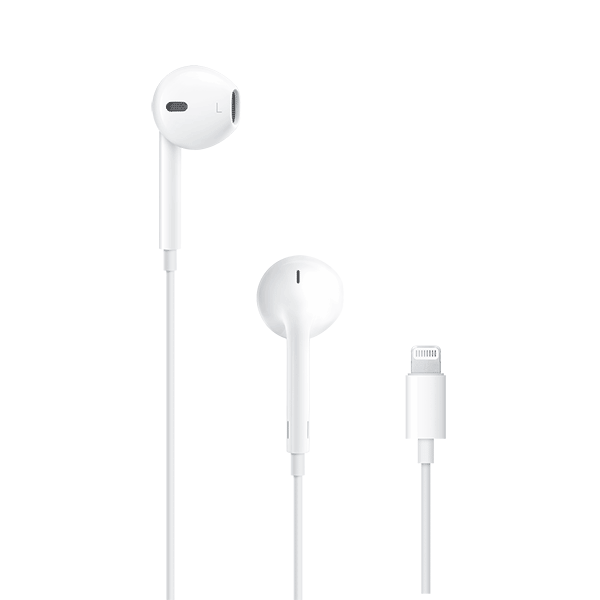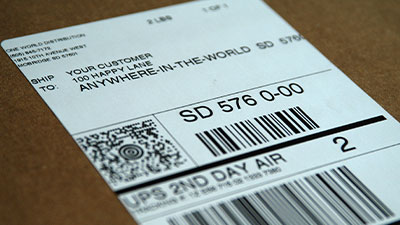Did you know that 49% of consumers say they will likely become repeat buyers after a personalized online shopping experience? Ecommerce personalization isn’t just a trend—it’s the key to higher conversions and customer loyalty.
Ecommerce personalization is a data-driven strategy that tailors the online shopping experience to each customer’s individual preferences, behaviors, and needs. This dynamic approach leverages advanced technologies, including AI and machine learning, to analyze user data such as past purchases, browsing history, and search patterns.
The goal is to present users with content, product recommendations, and offers that match their buyer profiles and interests. Improve user experience and increase conversion rates by continuously running tests on messaging and offers to find what works for each customer or segment.
Ecommerce personalization can also include product personalization. Brands can use services like personalized-to-consumer fulfillment to boost revenue, average order values, and conversions. Consumers are willing to pay around a 25% premium for personalized items, and 77% of consumers have chosen, recommended, or paid more for a brand that provides product personalization.
Adding personalization to your ecommerce strategy creates tangible ROI and helps to convert more visitors into returning shoppers. Discover the power of ecommerce personalization and how it can radically increase user engagement and more importantly, purchases on your website.
Ecommerce personalization has transformed significantly over the years. Initially, businesses relied on basic customer data, such as name-based email greetings or broad product recommendations. However, modern personalization leverages AI, machine learning, and real-time behavioral data to create a seamless, hyper-relevant shopping experience.
In the past, personalization was limited to simple rules-based engines. Today, advancements in predictive analytics and automation allow businesses to anticipate customer needs and feed them what they want. The rise of omnichannel and multi-channel ecommerce has also enabled personalization across multiple touchpoints, ensuring a cohesive experience from email campaigns to website interactions and even in-store visits.
With online shopping competition fiercer than ever, ecommerce brands must differentiate themselves. Personalization is a key tactic to deliver superior online shopping experiences and maximize your marketing efforts:
Hyper-personalization takes standard ecommerce personalization further by using real-time behavioral data and AI-driven insights to tailor experiences at an individual level. Unlike traditional personalization, which segments users into groups, hyper-personalization dynamically adjusts content, recommendations, and offers for each unique visitor.
Many businesses use “personalization” and “customization” interchangeably, but they are distinct strategies that impact the customer experience differently.
Personalization is data-driven and automated, relying on AI and machine learning to tailor product recommendations, marketing messages, and website experiences based on user behavior, preferences, and past interactions.
Customization is user-driven, allowing customers to manually select their preferences to modify their experience.
While both strategies enhance the customer journey, personalization is passive and predictive, whereas customization requires active user input. Tools like OWD’s P2C plugin allow for easy product customization to tailor items just for them.
To effectively implement ecommerce personalization strategies, it is important to understand the key components involved:
Collecting relevant customer data is the foundation of personalization. Businesses gather this data from multiple sources, including:
Drive meaningful personalization by analyzing data and segmenting audiences based on behavior and demographics.
Delivering timely, relevant messaging is key to increasing engagement and conversions. Personalization applies across multiple touchpoints:
Providing special deals or discounts tailored to individual customers. Offer personalized discounts to incentivize a purchase or reward loyalty. For instance, a customer who has been eyeing a particular item for weeks but hasn’t made a purchase might receive a special discount code for that item, nudging them toward a conversion.
Customers appreciate when their shopping experience feels uniquely catered to their preferences. Ecommerce personalization utilizes customer data to present product suggestions that resonate with individual interests, significantly increasing the likelihood of conversions. These recommendations can be displayed on product pages, shopping carts, or through personalized email campaigns.
Adjusting website content to reflect the user’s potential interests or location. Delivering content that aligns with a user’s browsing history and engagement creates a more relevant customer journey, improving average order values and conversions.
When customers encounter personalized content, they are more likely to engage with it. This increased activity reduces bounce rates and promotes longer session durations, which are crucial metrics for ecommerce success.
Customizing the user interface based on individual preferences can greatly enhance the shopping experience. This can include displaying recently viewed items, saving favorite products, and offering personalized search filters.
A seamless, personalized shopping experience encourages higher engagement and brand loyalty. This includes:
Work with 3PLs that offer personalized-to-consumer fulfillment. Customers can personalize products at checkout and elevate the unboxing experience with custom greeting cards and packaging. Engrave, embroider, or print directly to your products. Flex design allows for fast switches and endless possibilities to get creative. Visualize the goods and allow your customers the freedom to become product designers.
Businesses can implement various types of personalization strategies to attract new shoppers. Some common examples include:
75%
of consumers say they’re more likely to be loyal to brands that understand them personally
The main objectives of ecommerce personalization:
AI and machine learning (ML) are the driving forces behind ecommerce personalization, allowing businesses of all sizes to compete with industry leaders.
AI analyzes user behavior to anticipate future needs and recommend products before customers even search for them.
ML algorithms continuously refine recommendations based on real-time interactions, improving accuracy over time.
Even businesses with limited budgets can leverage AI-driven personalization through cost-effective tools like ChatGPT, Klevu, and Nosto, helping them compete with enterprise brands.
Tailored and engaging interactions are what anyone wants. Analyze how visitors are exploring your site and why they are leaving. Customize each experience with personalization. Maximize your customer data without the heavy lifting. Deliver customized recommendations and tailored navigation experiences that resonate with individual preferences. Make every interaction count by adapting to onsite user behavior, setting the stage for more meaningful connections, and improving conversion rates.
Understanding how users interact with an ecommerce website is crucial for implementing effective onsite personalization. By leveraging tools such as heatmaps, click tracking and session recordings, businesses can gain valuable insights into user behavior, including:
Armed with comprehensive data on onsite user behavior, businesses can craft personalized experiences that cater to individual preferences and browsing habits. Some key strategies include:
Implementing onsite personalization not only enhances the overall user experience but also yields several benefits for ecommerce businesses:
Tracking the impact of personalization efforts is crucial for optimization and ROI. Key performance indicators (KPIs) to monitor include:
Regularly analyzing these KPIs enables ecommerce brands to refine their personalization strategies and drive meaningful business growth.
The importance of maintaining customer trust through transparent data privacy practices in the context of personalization cannot be overstated. Customers are increasingly aware of the value of their personal data and expect businesses to handle it responsibly. When implementing ecommerce personalization strategies, businesses must prioritize data privacy and security to build and maintain customer confidence.
Businesses should clearly communicate with customers about the collected data types, how they will be used, and the benefits they can expect from personalized experiences. Providing easily accessible privacy policies and consent forms is essential for establishing transparency.
It’s important to only collect the data that is necessary for personalization efforts. This reduces the risk associated with storing excessive customer information and demonstrates a commitment to respecting customer privacy.
Empowering customers to control their data through preference centers or opt-out mechanisms gives them a sense of ownership over their information. Respecting their choices regarding data collection and personalization is crucial for maintaining trust.
All customer data, especially sensitive information, should be encrypted. Employing robust encryption protocols ensures that the stolen data remains unreadable and unusable even if a security breach occurs.
Limiting access to customer data to authorized personnel only helps prevent unauthorized exposure or misuse. Role-based access control systems can ensure that employees only have access to the specific data they need for their roles.
Continuous monitoring, regular security audits, and prompt software updates are essential to proactively identify vulnerabilities and mitigate risks from evolving cyber threats.
By prioritizing customer data privacy and implementing robust security measures, businesses can comply with regulations and help customers shop with confidence.
Despite its benefits, implementing personalization comes with challenges. Here’s how to navigate them:
With evolving privacy laws (GDPR, CCPA), customers are increasingly concerned about how their data is used.
✅ Solution: Build trust through transparency. Clearly communicate data collection practices and offer opt-in personalization options.
Many ecommerce brands struggle with integrating AI-powered personalization across their tech stack.
✅ Solution: Start small. Begin with email personalization (e.g., personalized product recommendations) and gradually expand to website, mobile, and social channels.
Delivering a seamless personalized experience across email, website, social media, and apps is challenging.
✅ Solution: Use omnichannel personalization platforms that unify data and provide a consistent, personalized experience across all touchpoints.
By addressing these challenges early, ecommerce brands can unlock the full potential of personalization without common roadblocks.
As technology advances, the future of ecommerce personalization will include:
Businesses that stay ahead of these trends will create deeper connections with customers and drive long-term growth.
There are many ecommerce personalization tools that you can use to improve your online shopping experience. However, the most important one you need is P2C fulfillment.
We are a ecommerce order fulfillment company that offers comprehensive fulfillment services for D2C and B2B businesses. We also provide US-based call center services to handle our partners customer support needs via email, chat, or phone.
We can help you deliver fast fulfillment for your ecommerce business but we also offer a personalized touch that sets us apart from other logistics companies. Our P2C plugin allows your customers to personalize your products with custom engravings and embroidery. They can also include personalized greeting cards and packaging for the ultimate unboxing experience.
Emerging ecommerce shoppers want more product personalization and our tech can make it happen. Get in touch with a personalization expert and we can help help lower your fulfillment costs and discuss integrating our P2C software so you can start offering product personalization.

Fulfillment costs are based on three criteria: size, weight and delivery time.
OWD offers five service levels: economy (7-10 days); Standard (5-7 days), 2-Day, Overnight and International.

Example Weight: 1 ounce
Fulfillment | Postage | Total |
|---|---|---|
$1.75 | $3.64 | $5.39 |
Lorem ipsum dolor sit amet, consectetur adipiscing elit. Ut elit tellus, luctus nec ullamcorper mattis, pulvinar dapibus leo.
Lorem ipsum dolor sit amet, consectetur adipiscing elit. Ut elit tellus, luctus nec ullamcorper mattis, pulvinar dapibus leo.
Lorem ipsum dolor sit amet, consectetur adipiscing elit. Ut elit tellus, luctus nec ullamcorper mattis, pulvinar dapibus leo.
Lorem ipsum dolor sit amet, consectetur adipiscing elit. Ut elit tellus, luctus nec ullamcorper mattis, pulvinar dapibus leo.
Lorem ipsum dolor sit amet, consectetur adipiscing elit. Ut elit tellus, luctus nec ullamcorper mattis, pulvinar dapibus leo.
DDU means Delivery Duty Unpaid – where the buyer pays for all of the import fees at delivery.
Unexpected import fees give buyers sticker shock – not good. When they refuse to pay, you’ve lost a sale and must pay to return your product, or abandon it.
DDU is an old idea whose time has passed. For these reasons and more, OWD doesn’t recommend DDU for e-com sellers.
DDP is an acronym for Delivery Duty Paid. DDP means that the seller pays for all the duties and import fees.
With DDP, your customers won’t be surprised with unexpected customs charges – good!
With OWD’s landed cost calculator, your foreign customers will know exactly what their various VAT, customers and duties will cost. No unhappy surprises.
For large-scale operations needing a full solution in Europe, there’s OWD Europe, based in Amsterdam.

OWD handles phone calls, e-mails and web chat eighteen hours a day from our own state-of-the-art facility.
We’ll handle your inbound sales and customer service contacts.
You get career agents who speak American English and know how to sell.
$99 gets you 200 calls, e-mails or chats handled every week.
You get your own phone number and custom e-mail.
We do a lot more. Call for details.

The Voice of Your Brand
OWD’s all-inclusive Returns service provides simplicity and high-end customer service. OWD includes a pre-printed return label as part of your packing slip. Your customer need only drop it in the mail.
What’s included: packaging slip with return label, QC inspection, re-bag, re-tag and return to stock. What’s excluded: postage cost, poly bags and any special packaging.
